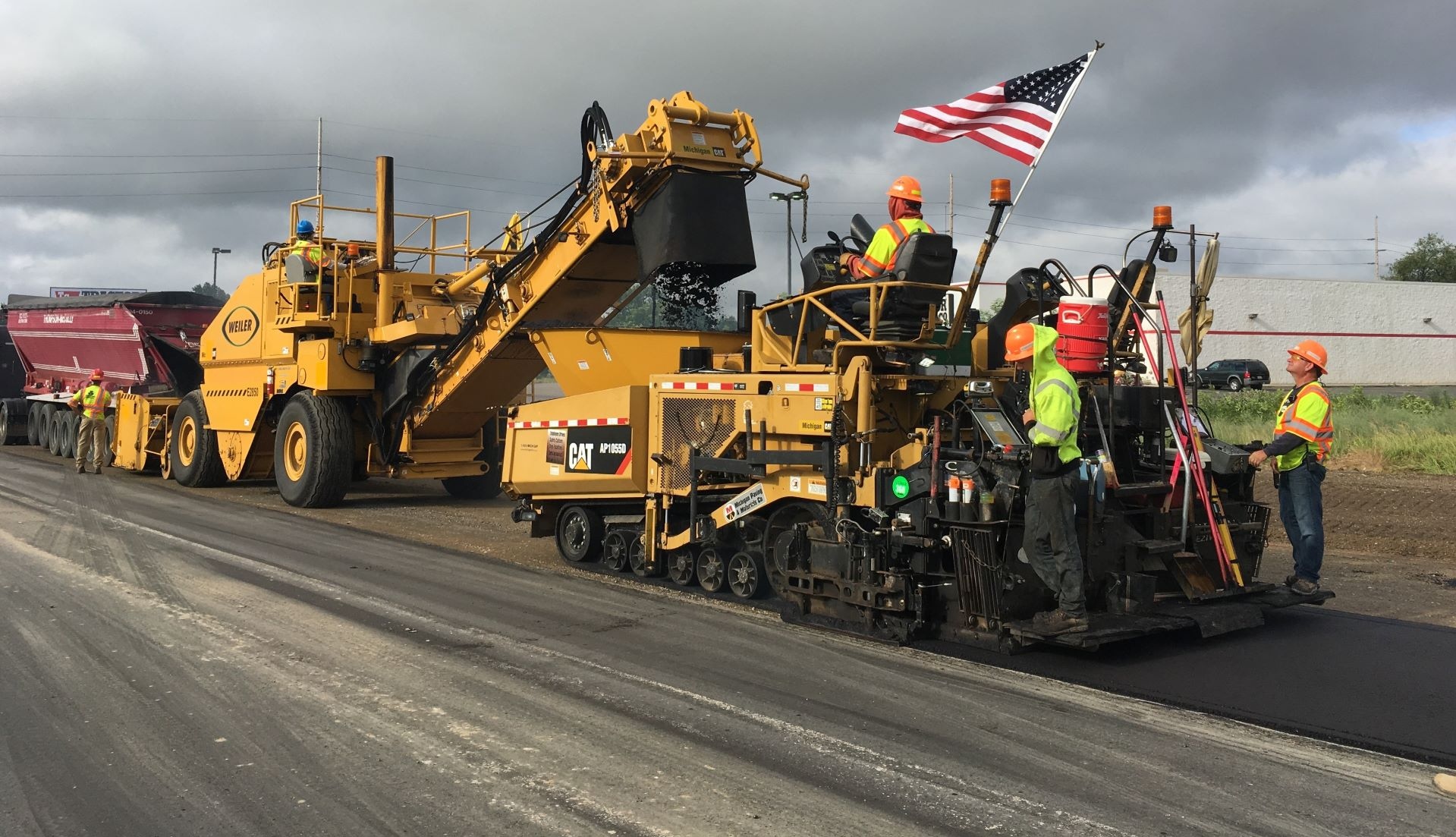
Asphalt pavement refers to any paved road surfaced with asphalt. Asphalt pavement is a combination of approximately 95% stone, sand, or gravel bound together by asphalt cement, a product of crude oil. Asphalt cement is heated aggregate, combined, and mixed with the aggregate at an asphalt pavement facility. The resulting asphalt pavement is loaded into trucks for transport to the paving site. The trucks dump the asphalt pavement into hoppers located at the front of paving machines. The asphalt is placed, and then compacted using a heavy roller, which is driven over the asphalt. Traffic is generally permitted on the pavement as soon as the pavement has cooled.
Below are some of the reasons that highlight why asphalt pavements are so widely used around the world and here in Michigan!
Ultra-Thin
Ultra-Thin offers a simple, cost effective way to maintain roads and streets, as it protects your investment in them. An asphalt pavement treatment designed specifically for thin lift (3/4 inch +) placement, Ultra-Thin was developed for structurally sound pavements that are showing signs of aging, oxidation or minor surface disintegration. You end up with a stronger, more beautiful pavement that improves the ride quality for drivers and reduces traffic noise for the community. Click Here to Learn More!
Perpetual Pavements
Perpetual Pavement combines the well-documented smoothness and safety advantages of asphalt with an advanced, multi-layer pavement design process, that with routine maintenance, extends the useful life of a roadway to half a century or more. Pavements designed and constructed in accordance with the Perpetual Pavement concept will last, and last, and last. Click Here to Learn More!
Rubbilzation
Rubblization is a proven construction technique that turns a deteriorated concrete road into the base for a smooth, safe, quiet, durable pavement constructed of asphalt pavement. It minimizes delays for motorists and allows for construction happen more quickly because the existing pavement can be prepped in place and because it doesn‘t need to be hauled away, the project savings can be substantial. Rubblization with an asphalt overlay is a very cost-effective rehabilitation method.
Life Cycle Cost
For the initial construction and over the long haul, asphalt pavement saves money on construction and maintenance. That‘s the conclusion of highway engineers and departments of transportation across the country. The life-cycle costs—money spent on road construction and maintenance over its lifetime—are significantly lower with asphalt mixtures than with concrete.
Environmental Sustainability
Environmental Sustainability is often defined as "development that meets the needs of the present without compromising the ability of future generations to meet their own needs." By any definition, asphalt is the sustainable material for constructing pavements. From the production of the paving material, to the placement of the pavement on the road, to rehabilitation, through recycling, asphalt pavements minimize impact on the environment. Low cost over the pavement's life cycle, low consumption of energy for production and construction, low emission of greenhouse gases, and conservation of natural resources help make asphalt the environmental pavement of choice. Click Here to Learn More!